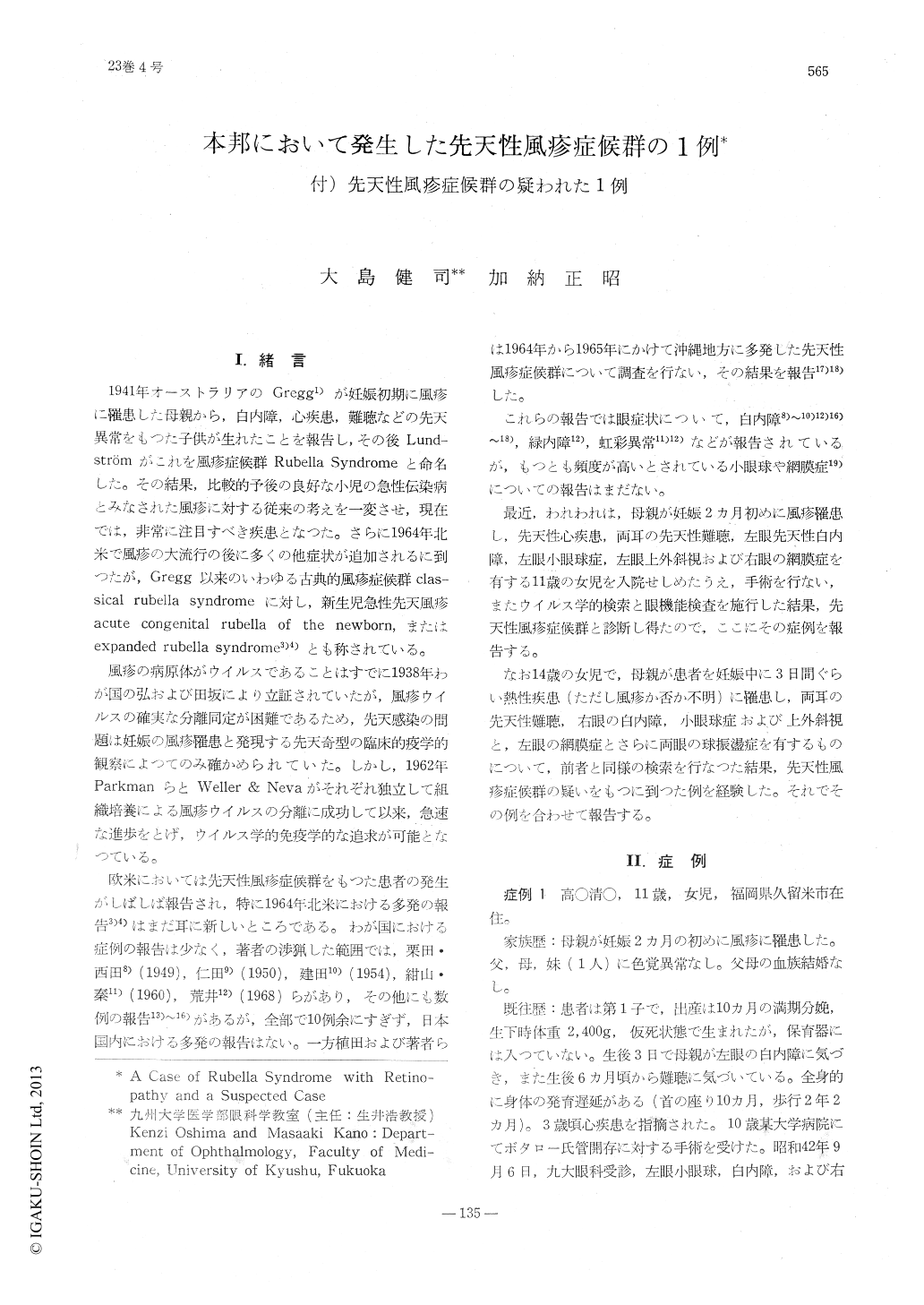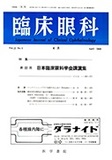Japanese
English
- 有料閲覧
- Abstract 文献概要
- 1ページ目 Look Inside
I.緒言
1941年オーストラリアのGregg1)が妊娠初期に風疹に罹患した母親から,白内障,心疾患,難聴などの先天異常をもつた子供が生れたことを報告し,その後Lund—strömがこれを風疹症候群Rubella Syndromeと命名した。その結果,比較的予後の良好な小児の急性伝染病とみなされた風疹に対する従来の考えを一変させ,現在では,非常に注目すべぎ疾患となつた。さらに1964年北米で風疹の大流行の後に多くの他症状が追加されるに到つたが,Gregg以来のいわゆる古典的風疹症候群clas—sical rubella syndromeに対し,新生児急性先天風疹acute congenital rubella of the newborn,またはexpanded rubella syndrome3)4)とも称されている。
風疹の病原体がウイルスであることはすでに1938年わが国の弘および田坂により立証されていたが,風疹ウイルスの確実な分離同定が困難であるため,先天感染の問題は妊娠の風疹罹患と発現する先天奇型の臨床的疫学的観察によつてのみ確かめられていた。しかし,1962年ParkmanらとWeller&Nevaがそれぞれ独立して組織培養による風疹ウイルスの分離に成功して以来,急速な進歩をとげ,ウイルス学的免疫学的な追求が可能となつている。
Although many cases of congenital rubella syndrome are reported in foreign countries only a few cases are reported in Japan.
The authors reported two cases (one typical case and the other suspected) with several anomalies including retinopathy which has no been described in Japan.
Case, K. T., a 11-year-old girl, whose mother had a history of clinical rubella in the 2nd month of pregnancy, was born after 40 weeks of gestation, weighing 2400 gm. Cataract of the left eye was noticed on 3rd day of life, deafness on 6th month and heart murmur on 18th month.

Copyright © 1969, Igaku-Shoin Ltd. All rights reserved.


